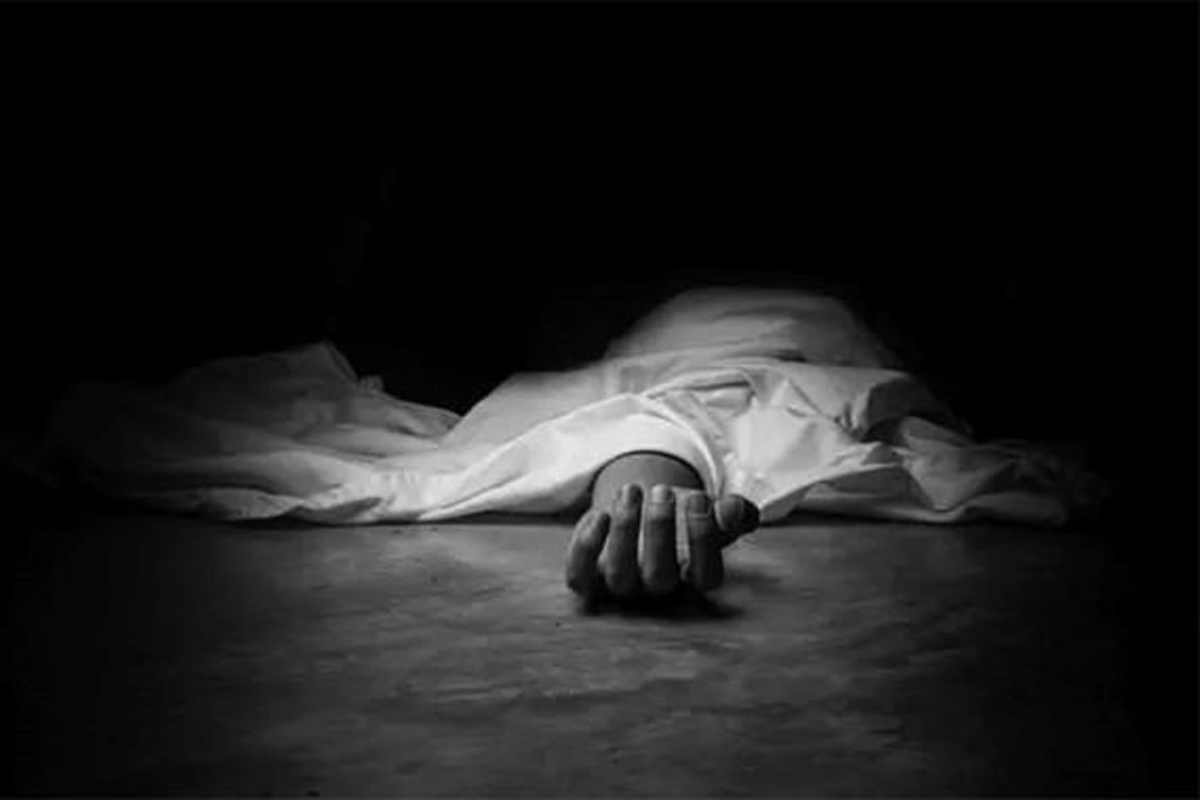
The Bizarre Case of the Tanacu Exorcism
By Brent Swancer
BELIEF in demons and demonic possession has been prevalent throughout cultures for a very long time. Although the exact causes and mechanisms for such incidents are as varied as the people who believe in them, one thing that has always entered the conversation on such cases is whether any of this has any factual basis at all, or if it is just the result of hallucinations and mental illness. It is at times really hard to say for sure, and some cases don’t make it any easier. From the country of Romania we have a shockingly recent case of a good old fashioned exorcism that not only resulted in much mystery, but which actually left the possessed dead.
Born in 1982 in the village of Perieni, Westen Moldovia, Romania, Maricica Irina Cornici had a rough life from the start. Her father committed suicide when she was just 2 years old right in front of her, after having been convicted of stealing chickens and sentenced to 4 years in prison, something he was apparently not willing to go through. Her abusive, alcoholic mother was unable to care for her or her brother Vasile, and so she was turned over to social services and sent to an orphanage in the town of Bārlad. At the time, orphanages in Romania were no walk in the park. They were filthy, overcrowded cesspools full of children from impoverished families from all over the country, where the children had little to eat and were treated as little more than animals. Abuse was rampant, and there were even kids who died from starvation or being beaten.
When she was 19 years old, Irina found a foster family and managed to finally get out of that hellish place, managing to find work and save enough money to go to Germany, where she worked as a nanny for a time before returning to Romania in 2005, where at the age of 23 she would join a remote monastery in the Carpathian Mountains in the village of Tanacu, following in the footsteps of a friend of hers from the orphanage by the name of Kitza. The monastery was perched upon an inaccessible steep hill far from civilization, and here she lived a very simple and strict life, with no running water or electricity and overseen by the authoritarian taskmaster Father Daniel Corogeanu, but it was a roof over her head and better than living in poverty. However, not long after her arrival strange things would begin to happen.
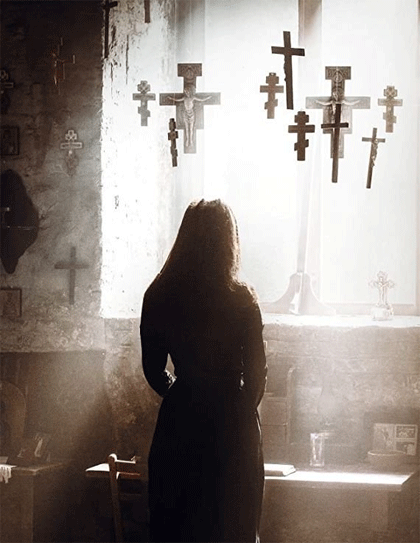 It started when Irina began to giggle uncontrollably during mass, something she would claim to not remember doing when confronted about it. This began to escalate into sudden outbursts in which she would blurt out inappropriate or sexual things to other nuns, and she started to complain of hearing voices in her head that were telling her she was sinful. On other occasions she would have violent outbursts in which she would lash out at property or other people, at times bad enough that she had to be subdued, but she would not remember any of these bizarre episodes. It got to the point where she was deemed a danger to herself and those around her, and so she was sent to a psychiatric facility in Vaslui. There she was diagnosed as suffering from disorganized schizophrenia, but the other nuns and Father Corogeanu believed that she was actually being tormented by demons or Satan himself. This was only bolstered by the fact that Irina’s own brother claimed to have seen a demon enter her once, and even Irina herself admitted that she believed the voices she was hearing were from the Devil. Nevertheless, after 2 weeks of observation she was released back into the care of the monastery. Unfortunately, it was far from over.
It started when Irina began to giggle uncontrollably during mass, something she would claim to not remember doing when confronted about it. This began to escalate into sudden outbursts in which she would blurt out inappropriate or sexual things to other nuns, and she started to complain of hearing voices in her head that were telling her she was sinful. On other occasions she would have violent outbursts in which she would lash out at property or other people, at times bad enough that she had to be subdued, but she would not remember any of these bizarre episodes. It got to the point where she was deemed a danger to herself and those around her, and so she was sent to a psychiatric facility in Vaslui. There she was diagnosed as suffering from disorganized schizophrenia, but the other nuns and Father Corogeanu believed that she was actually being tormented by demons or Satan himself. This was only bolstered by the fact that Irina’s own brother claimed to have seen a demon enter her once, and even Irina herself admitted that she believed the voices she was hearing were from the Devil. Nevertheless, after 2 weeks of observation she was released back into the care of the monastery. Unfortunately, it was far from over.
Although Irina’s mental condition had gotten better during her hospitalization, upon her return to the monastery it came back in a major way. She would have seizures, growl, hiss and snarl, and have weird episodes in which she would ruthlessly hit herself. The other nuns often had to subdue her and tie her up, locking her in a room until she calmed down, and on many occasions Irina herself begged them to bind her, telling them that she was being controlled by demons and needed help. It was becoming increasingly obvious to those around her that Irina was possessed, and so Father Corogeanu came to the conclusion that the only way to help this tormented woman was through an exorcism. Preparations were made the exorcism began.
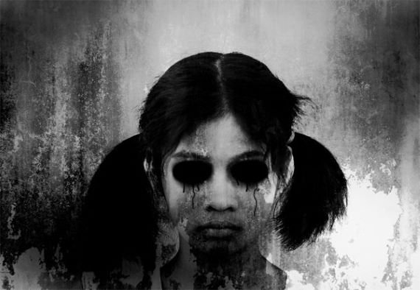 Irina was bound by the wrists and feet, chained to a makeshift cross, and anointed with holy oil, after which prayers were said over her, with Irina through it all snarling, struggling, and cursing to the point that a towel was stuffed in her mouth and she was gagged. This went on for three days, after which she was locked in her room until the Devil left her. At first it seemed as though it might have worked. Irina became somewhat lucid and was given something to eat and drink for the first time in days, but she soon after fainted and could not be woken back up. Paramedics were called in and Irina was taken to the hospital, but she would die on the way. The official cause of death at the time was found to be a mixture of dehydration, exhaustion, and asphyxiation from the cloth that had been shoved into her mouth. Father Corogeanu and four nuns were arrested and charged in relation to Irina’s death, the news soon all over headlines, but they stood by their story that an exorcism had been absolutely necessary, with Father Corogeanu saying:
Irina was bound by the wrists and feet, chained to a makeshift cross, and anointed with holy oil, after which prayers were said over her, with Irina through it all snarling, struggling, and cursing to the point that a towel was stuffed in her mouth and she was gagged. This went on for three days, after which she was locked in her room until the Devil left her. At first it seemed as though it might have worked. Irina became somewhat lucid and was given something to eat and drink for the first time in days, but she soon after fainted and could not be woken back up. Paramedics were called in and Irina was taken to the hospital, but she would die on the way. The official cause of death at the time was found to be a mixture of dehydration, exhaustion, and asphyxiation from the cloth that had been shoved into her mouth. Father Corogeanu and four nuns were arrested and charged in relation to Irina’s death, the news soon all over headlines, but they stood by their story that an exorcism had been absolutely necessary, with Father Corogeanu saying:
She was sick and possessed. We said several Masses to end the spell. From a spiritual point of view, we did exactly the right thing. God has performed a miracle for her, finally Irina is delivered from evil. It was God’s will that she died. I don’t understand why journalists are making such a fuss about this. Exorcism is a common practice in the heart of the Romanian Orthodox church and my methods are not at all unknown to other priests. We did our duty in those moments when you couldn’t do anything else. We had to help her.
After a media circus of a trial, they were charged with false imprisonment leading to death, with Father Corogeanu sentenced on appeal to 7 years, one nun to 6 years and the other three nuns to 5 years, but they continued to insist on their innocence, and that they had done the right thing. Interestingly, in 2014 a further investigation would exhume Irina’s body to find that the cause of death had actually likely been an overdose of adrenaline administered to the ailing women by paramedics in the ambulance, meaning that those from the monastery had not been the ones to actually kill her. Regardless of this, Father Corogeanu was defrocked and disgraced, and the case still reverberates in Romania to this day. All involved have continued to deny any wrongdoing, locals are adamant that it was real demonic possession, and we are left to wonder. Just what went on in that remote monastery? Was there anything paranormal going on here or was this just a case of a severely mentally disturbed individual at the mercy of our misunderstandings and fears? It remains disputed, and a tragic case with no real answers.
MU
The strange mystery of Voodoo Death
By Brent Swancer
THE human mind is a morass of weird and unexplained mysteries that we have only managed to barely scratch the surface of. It is an uncharted territory in many ways, elusive and holding within it all manner of anomalies and oddities, many of which we may perhaps never come to a conclusive understanding of. From the depths of history there have long been cases of mysterious curses that cause us to waste away and die, so is there perhaps a link between such tales and the powers of our own minds? One theory seems to point that there is such a link, and that our very minds have the ability to cause us to wither away and die, in a process that remains unexplained and in the realm of the unknown.
The term most often referred to as “Voodoo Death” or also sometimes as “Hex Death,” is the controversial and debated idea that death can be brought about not only by physical ailments, injuries, or diseases, but also by the mind itself. In such cases, stress, fear, shock, and simply the belief that one is dying can physically make it so, more or less a psychosomatic death brought about by the belief of incoming doom itself. The bizarre phenomenon was long known of by anthropologists, who noticed that in some tribal societies simply being cursed by magic would cause the victim to steadily deteriorate until they died, but this was only first brought to the public consciousness in 1941 by the American physiologist, professor and chairman of the Department of Physiology at Harvard Medical School Dr. Walter Cannon. He theorized that in some cases, a human being could become in a sense “cursed” by a perceived outside force, to the point that their physical condition would deteriorate in response to psychological distress, sometimes quite rapidly, ending in their death.
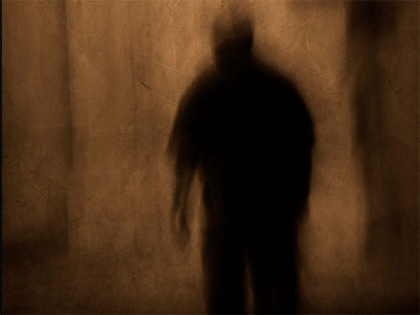 Cannon suggested that such instances of Voodoo death were common in aboriginal societies or those in which belief in magic and the supernatural were particularly strong, and he would cite numerous examples of this happening. There were tribes in which a medicine man could point a “magic bone” at a victim and curse them, after which the person would experience a rapid decline in physical health and death sometimes as quickly as within 24 hours. In one of his famous cases, he explained the story of a Maori woman who ate a fruit that was no way poisonous, but when she learned that this particular fruit had come from a taboo place, she quickly lost her health and perished. In other cases, the spell was reverted, such as in the case of a report by a Dr. S. M. Lambert of the Western Pacific Health Service, working with a mission in North Queensland, Australia. According to the report, a victim called “Rob” came in complaining that he had been hexed and was dying, and Cannon would explain of what happened:
Cannon suggested that such instances of Voodoo death were common in aboriginal societies or those in which belief in magic and the supernatural were particularly strong, and he would cite numerous examples of this happening. There were tribes in which a medicine man could point a “magic bone” at a victim and curse them, after which the person would experience a rapid decline in physical health and death sometimes as quickly as within 24 hours. In one of his famous cases, he explained the story of a Maori woman who ate a fruit that was no way poisonous, but when she learned that this particular fruit had come from a taboo place, she quickly lost her health and perished. In other cases, the spell was reverted, such as in the case of a report by a Dr. S. M. Lambert of the Western Pacific Health Service, working with a mission in North Queensland, Australia. According to the report, a victim called “Rob” came in complaining that he had been hexed and was dying, and Cannon would explain of what happened:
From the missionary he (Dr. Lambert) learned that Rob has had a bone pointed at him by Nebo (a “witch doctor”) and was convinced that in consequence he must die. Thereupon Dr. Lambert and the missionary went to Nebo, threatening him that his supply of food would be shut off if anything happened to Rob and that he and his people would be driven away from the Mission. At once Nebo agreed to go with them to see Rob. He leaned over Rob’s bed and told the sick man that it was all a mistake, a mere joke—indeed, and that he had not pointed a bone at him at all. The relief, Dr. Lambert testifies, was almost instantaneous; that evening Rob was back at work, quite happy again, and in full possession of his physical strength.
 Cannon would collect a myriad of cases like this from such far-flung places as the tribes of South America, Africa, Australia, New Zealand, the islands of the Pacific, and Haiti. Cannon basically believed this to be the ultimate effect of fear and stress caused by the deep belief in the supernatural forces being aimed against them, which had then caused a physiological response that had led to their deterioration and death, all further cemented by the reactions of others in their society who treat them as truly cursed and doomed to die. This would lead to a variety of negative affects on the body, including a division of the nervous system, a fall in blood pressure, accelerated heart rate, rapid breathing, and the sudden loss of appetite and will to live, which would all conspire against the victim. Cannon would say of this:
Cannon would collect a myriad of cases like this from such far-flung places as the tribes of South America, Africa, Australia, New Zealand, the islands of the Pacific, and Haiti. Cannon basically believed this to be the ultimate effect of fear and stress caused by the deep belief in the supernatural forces being aimed against them, which had then caused a physiological response that had led to their deterioration and death, all further cemented by the reactions of others in their society who treat them as truly cursed and doomed to die. This would lead to a variety of negative affects on the body, including a division of the nervous system, a fall in blood pressure, accelerated heart rate, rapid breathing, and the sudden loss of appetite and will to live, which would all conspire against the victim. Cannon would say of this:
The victim will pine away; his strength runs out like water; and in the course of a day or two he succumbs. The combination of lack of food and water, anxiety, very rapid pulse and respiration, associated with a shocking experience having persistent effects, would fit well with fatal conditions reported from primitive tribes. Their medicine men have tremendous power over them: if they doom one of them to die, the unfortunate will accept his fate, isolate himself from his family and pass away within a short time.
In essence, our sense of reality and mental health was seen as having a profound effect on our physical health, with mind over matter being fatally real in such cases. Interestingly, this phenomenon is not restricted to just remote primitive tribes hiding away from civilization, and there are plenty of cases of this happening in modern society. One case happened in Nashville, Tennessee, with a patient who had been admitted to have surgery for cancer of the esophagus. He was then told that the cancer had spread and become terminal, with a prognosis of only a few months to live. His health then deteriorated rapidly until he passed away just as predicted. However, bizarrely it was found after his death that he did not in fact have terminal cancer, and that the scans had been botched. Indeed, there was found only a small tumor that in no way could have killed him. The theory is that he and his family were so convinced he was dying of cancer that his mind simply made it so, a tragic self-fulfilling prophecy. One physician has said of such cases:
The patient, when first confronted with the problem of his malignant disease appears to disregard it and be extraordinarily cheerful. Overnight the patient’s whole manner changes and he is physically and mentally transformed. He literally turns his face to the wall and lies inert in bed. He does not seem to be terrified but shows bland indifference. Within a month of the onset of his syndrome the patient will almost certainly be dead. If a necropsy is carried out there will often appear to be no adequate explanation for the cause of death.
Another famous report comes from 1960, when a business man named Finis P. Ernest, of Oklahoma City, began to display some strange symptoms that no one could explain. The owner of a successful nightclub, the normally healthy man had suddenly been beset with asthma attacks shortly after agreeing to sell his business. He was first hospitalized in January of 1960 in a semi-conscious state, suffering from breathing difficulties, but was soon released when his symptoms subsided. A few months later he would be admitted again with the same asthma-like symptoms, as well as convulsions and seizures, and he would be released and re-admitted like this over the next few months, all of this as the sale of his nightclub was going through. The attending physician, a Dr. James Mathis, could find nothing actually physically wrong with Ernest, yet his condition would continue to get worse, to the point that he was now being admitted to the hospital multiple times with “near-terminal” symptoms, the causes of which could not be ascertained.
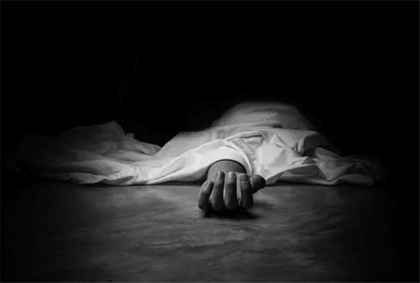 Dr. Mathis began to see a pattern in these hospitalizations, in that they seemed to coincide with Ernest’s visits to his mother, and when he was advised to try not visiting her for a while his symptoms disappeared entirely. A look into the history of the two of them showed that they were uncommonly close, and not only that, but she had been strongly against the sale of his nightclub, of which she was his business partner. When he had decided against her wishes to sell it, she had allegedly told him, “Do this, and something dire will happen to you.” Two days later, his mysterious illness had started. In the end, on the day on which Ernest was to reinvest the money he had made off the sale of the nightclub he had gotten a call from his mother telling him that to go through with it would be the end of him, and he seemed to really believe it. His health took a steep downturn for the worse, and after a bout of intense lung difficulties he passed away in August of 1960. An autopsy could find nothing physically wrong with him, no evidence of a heart attack or stroke, nothing at all to explain why he was dead. The only answer doctors could come up with was that he had psychosomatically killed himself due to his extreme conviction that his mother’s dire omen had been true.
Dr. Mathis began to see a pattern in these hospitalizations, in that they seemed to coincide with Ernest’s visits to his mother, and when he was advised to try not visiting her for a while his symptoms disappeared entirely. A look into the history of the two of them showed that they were uncommonly close, and not only that, but she had been strongly against the sale of his nightclub, of which she was his business partner. When he had decided against her wishes to sell it, she had allegedly told him, “Do this, and something dire will happen to you.” Two days later, his mysterious illness had started. In the end, on the day on which Ernest was to reinvest the money he had made off the sale of the nightclub he had gotten a call from his mother telling him that to go through with it would be the end of him, and he seemed to really believe it. His health took a steep downturn for the worse, and after a bout of intense lung difficulties he passed away in August of 1960. An autopsy could find nothing physically wrong with him, no evidence of a heart attack or stroke, nothing at all to explain why he was dead. The only answer doctors could come up with was that he had psychosomatically killed himself due to his extreme conviction that his mother’s dire omen had been true.
Is any of this real? Can our own minds, when convinced of attacks against us either magically or physiologically, cause us to have psychologically-induced body failure? At the moment it all seems to be highly anecdotal and unproven in the medical field, but it still lurks about on the periphery. Is our mind capable of killing us simply from being strongly suggested to do so? Are we at the whims of these little explained forces? It is hard to say for sure, and it is a curious medical mystery and proof that there is possibility that out beliefs and minds have a more profound effect on us than we may have previously thought possible.
MU























